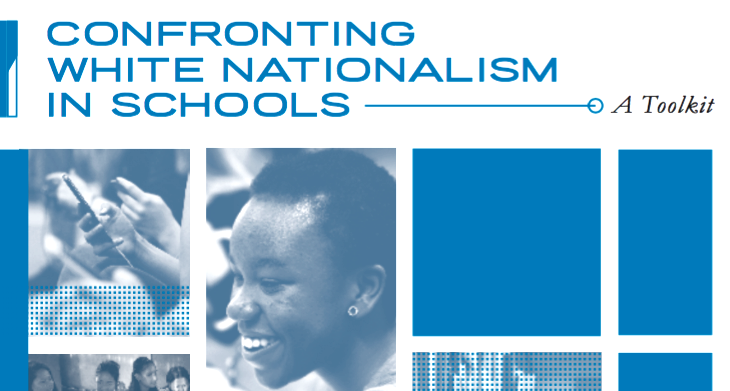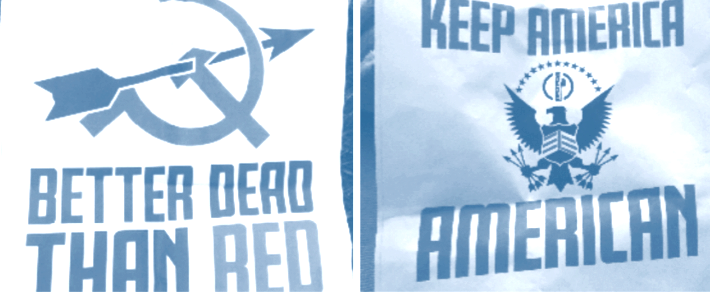 RUSSIAN FEDERATION/SHUTTERSTOCK
RUSSIAN FEDERATION/SHUTTERSTOCK
What do you do if you find racist graffiti on a wall near your school or youth program? Or come across neo-Nazi flyers in the area? Or read white nationalist comments on an online platform used by your program?
A toolkit, “Confronting White Nationalism in Schools,” can help adults who work with youth choose specific responses. It was created by the Western States Center, a Portland, Oregon, nonprofit whose mission is to strengthen inclusive democracy and respond to bigotry and intolerance.
Related Stories
When Hate Groups Recruit Youth: Teacher, Former White Nationalist Tell How to Counter It
Christian Picciolini: Why Teenager Joined, Then Quit White Power Movement
The guidebook came about after Chicago schoolteacher Nora Flanagan and other educators attended a gathering at the Western States Center not long after the Unite the Right rally in Charlottesville, Virginia. They felt they were seeing an increase in incidents of bigotry and intolerance.
“It was really frustrating to hear that everyone was experiencing them, and then nobody had any sort of cohesive approach,” Flanagan said.
The toolkit describes a number of scenarios and how to respond — from graffiti on walls to student and faculty efforts to create “white pride” groups at school.
It focuses on the white nationalism movement because leaders of that movement are actively recruiting youth, it says. It provides strategies for students, staff, administrators, parents and the broader community.

Courtesy Nora Flanagan
Image: Courtesy Nora Flanagan
For example, students could respond to graffiti or to anonymous online postings by documenting and reporting the incident. They could talk with adults about their concerns and start conversations with student-led groups.
Staff should communicate with administrators and other staff and possibly disable anonymous commenting on online platforms used. If a particular group is targeted, staff should take steps to provide support and care for those students.
Administrators can communicate with staff, discuss responses with the administrative team and let key stakeholders know how the problem is being addressed, the toolkit suggests. Depending on the situation, they could launch a community conversation.
But what if young people are discussing white nationalist ideas in school or after school and citing material from online sites?

Image: Courtesy Nora Flanagan
That’s when they need tools to assess the validity of information, the toolkit says. One strategy would be to collaborate with students to set criteria for what makes information credible. Consider a workshop on how to judge material for bias.
The toolkit also suggests that staff think about what’s going on in the lives of the students speaking about white nationalist ideas. Communicate with teachers, counselors, parents or administrators to see whether a young person is feeling more frustrated or aggressive for any reason, it suggests.
A meeting with the student would also help understand what underlying needs might be drawing them to extremism.
What if a student is openly identifying with a white nationalist group and advocating its position?
In addition to the strategies already described, staff could meet with colleagues to build a group to address the issue. In some cases, meet with the student to express concerns and find out more.
Administrators should examine program policies or develop policies if no appropriate ones exist. Administrators might reach out to local or national civil rights organizations for input.
No response should not be wholly punitive, the toolkit advises. It’s important to continue communication with the student, staff and administrators to see what each one can do to constructively address the problem.
The toolkit is clear: Hate speech is not the same thing as free speech: It threatens people’s safety. Allowing diverse viewpoints is one thing. Demeaning rhetoric is a different thing, the toolkit says.
Don’t let white nationalists shape the conversation, it advises.
Keep students central in your conversations, avoid an alarmist tone and keep the focus on the values at stake, the toolkit advises.





























